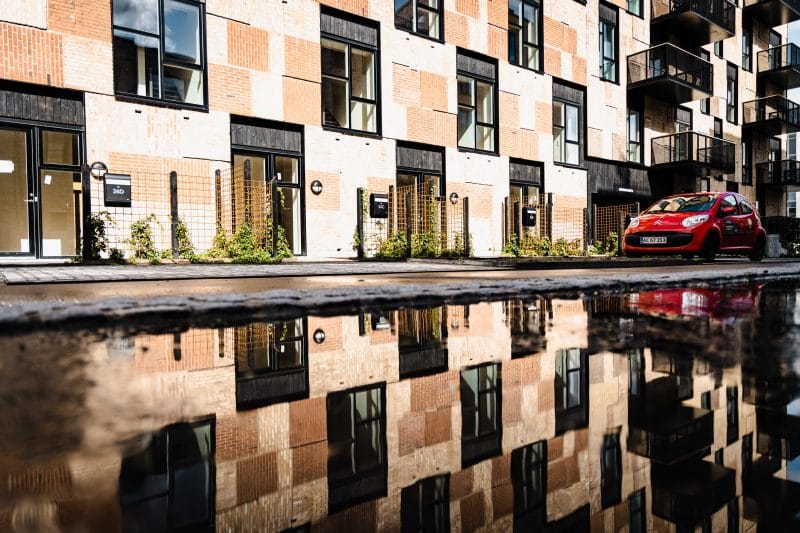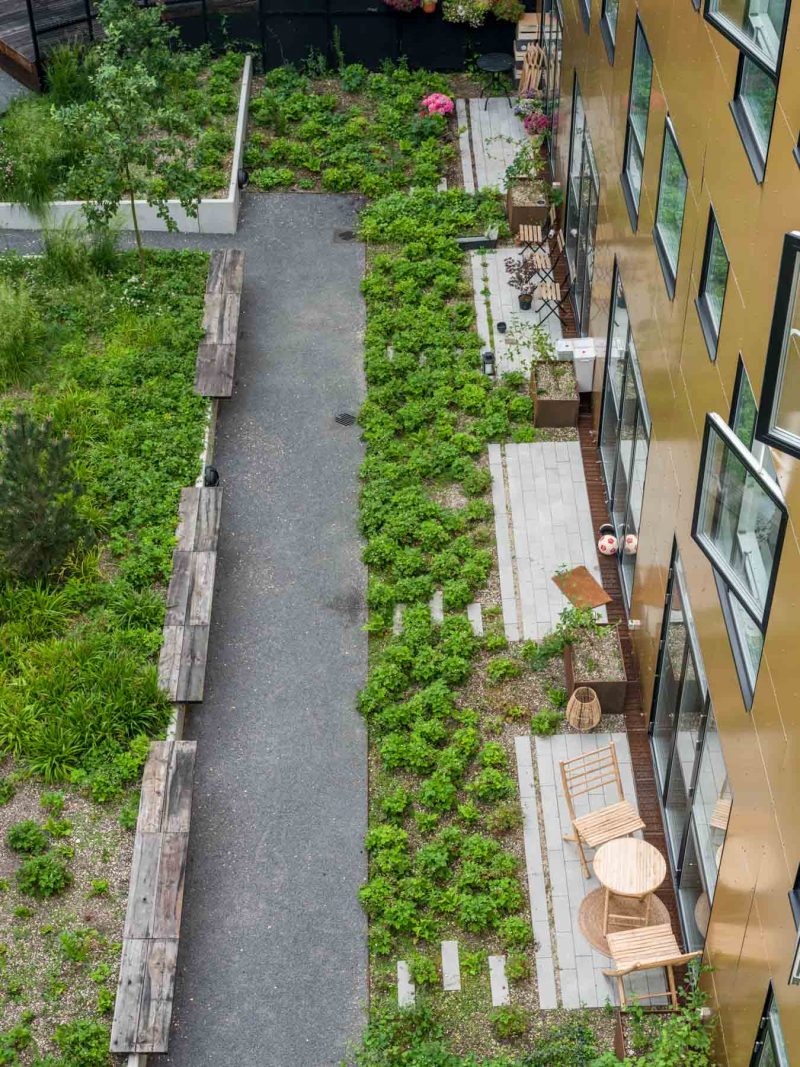The Resource Rows, a housing project consisting of 92 flats, demonstrate a radical reuse approach to materials that significantly reduce the construction carbon footprint. The flats are arranged around a shared courtyard and roofscape with 29 greenhouses made from reused wood and windows. The walls are built using upcycled bricks taken from a demolished Carlsberg brewery. As the brewery bricks were cement mortared and difficult to disassemble, Lendager developed a method whereby large squares would be cut from the old facades. Brick modules in different colours were then assembled in new designs, giving the building a patchwork-like facade. All internal floors were made of waste wood from the flooring manufacturer Dinesen, which would otherwise have been burned.













